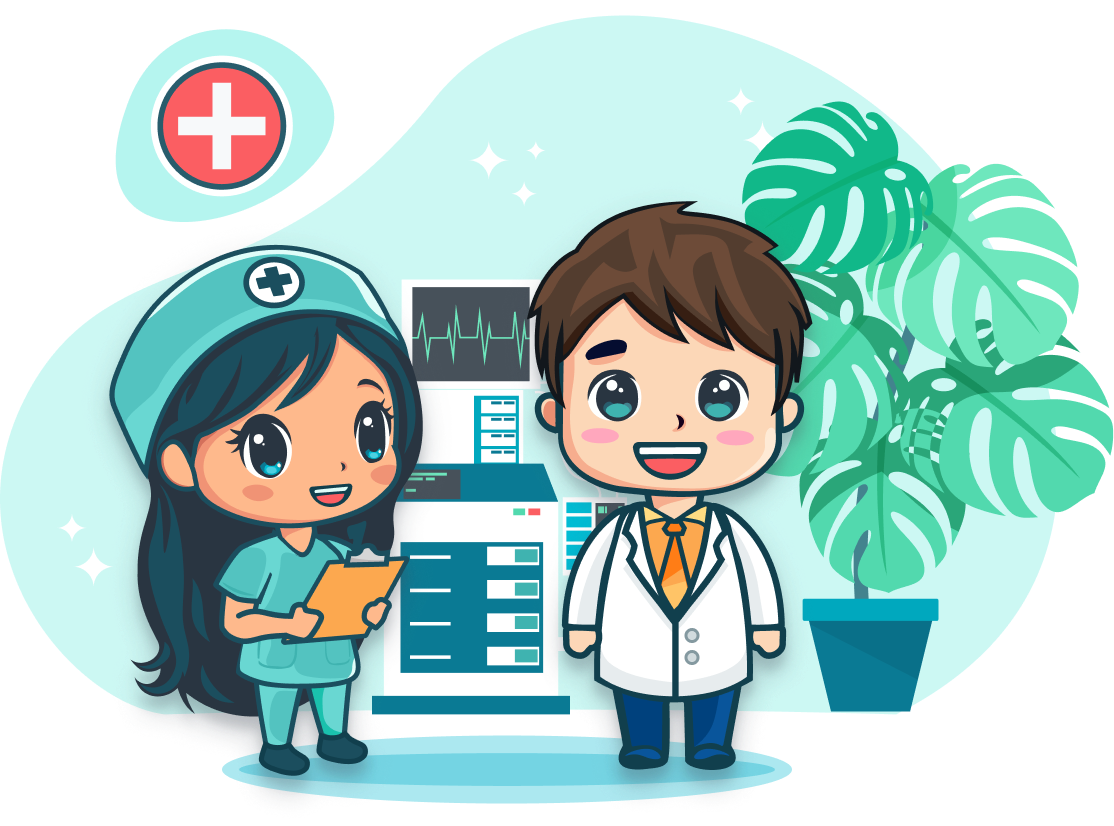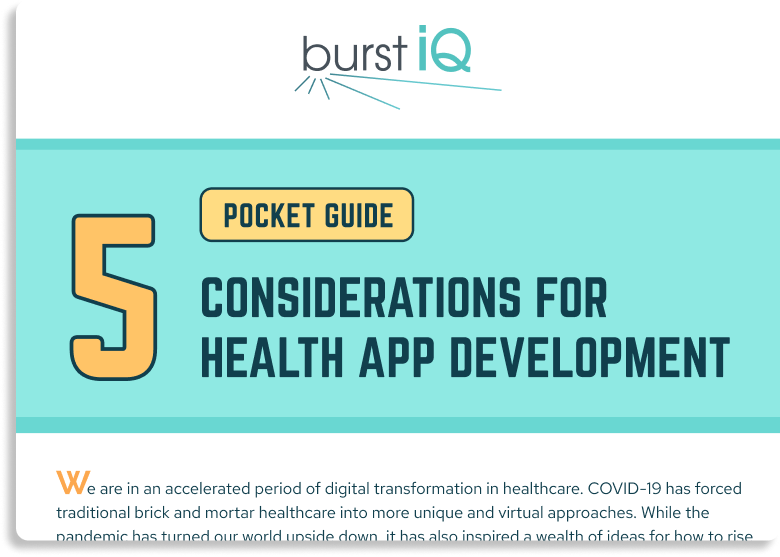KEY CHALLENGES
If you are an insurance company, a federal and state program (e.g., Medicare, Medicaid), or managing employer-sponsored health plans, we see you. Maintaining & utilizing quality data is challenging.
1.
Fragmented data systems hinder coordinated care
Healthcare providers struggle to improve patient outcomes because disconnected data sources prevent seamless, personalized treatment.
2.
Rising patient expectations demand better communication
Patients increasingly expect transparent, easy-to-access information and engagement, putting pressure on providers to enhance the experience.
3.
Operational costs continue to rise without quality compromise
Providers must find ways to reduce expenses while maintaining or improving care quality and access.
4.
Provider burnout from administrative overload
Excessive paperwork and inefficient workflows contribute to workforce stress and reduced well-being.
5.
Increasing regulatory & data privacy demands
Navigating complex compliance requirements while protecting sensitive patient data is a growing burden.
6.
Balancing resource allocation for sustainability
Healthcare organizations need to optimize clinical and financial resources to remain viable long-term.
KEY CHALLENGES
If you are an insurance company, a federal and state program (e.g., Medicare, Medicaid), or managing employer-sponsored health plans, we see you. Maintaining & utilizing quality data is challenging.
1.
Fragmented data systems hinder coordinated care
Healthcare providers struggle to improve patient outcomes because disconnected data sources prevent seamless, personalized treatment.
2.
Rising patient expectations demand better communication
Patients increasingly expect transparent, easy-to-access information and engagement, putting pressure on providers to enhance the experience.
3.
Operational costs continue to rise without quality compromise
Providers must find ways to reduce expenses while maintaining or improving care quality and access.
4.
Provider burnout from administrative overload
Excessive paperwork and inefficient workflows contribute to workforce stress and reduced well-being.
5.
Increasing regulatory & data privacy demands
Navigating complex compliance requirements while protecting sensitive patient data is a growing burden.
6.
Balancing resource allocation for sustainability
Healthcare organizations need to optimize clinical and financial resources to remain viable long-term.
KEY CHALLENGES
If you are an insurance company, a federal and state program (e.g., Medicare, Medicaid), or managing employer-sponsored health plans, we see you. Maintaining & utilizing quality data is challenging.
1.
Fragmented data systems hinder coordinated care
Healthcare providers struggle to improve patient outcomes because disconnected data sources prevent seamless, personalized treatment.
2.
Rising patient expectations demand better communication
Patients increasingly expect transparent, easy-to-access information and engagement, putting pressure on providers to enhance the experience.
3.
Operational costs continue to rise without quality compromise
Providers must find ways to reduce expenses while maintaining or improving care quality and access.
4.
Provider burnout from administrative overload
Excessive paperwork and inefficient workflows contribute to workforce stress and reduced well-being.
5.
Increasing regulatory & data privacy demands
Navigating complex compliance requirements while protecting sensitive patient data is a growing burden.
6.
Balancing resource allocation for sustainability
Healthcare organizations need to optimize clinical and financial resources to remain viable long-term.
HOW LIFEGRAPH HELPS
LifeGraph seamlessly integrates diverse healthcare data sources—such as EMRs, claims, patient-generated data, and provider information—into a unified, interoperable platform. This breaks down data silos that often hinder care coordination and operational efficiency, enabling providers to access a comprehensive, real-time view of patients and care networks.
By simplifying data management and ensuring high-quality, trustworthy data, LifeGraph enables healthcare organizations to deploy AI-driven analytics and decision support tools more effectively. This supports predictive modeling, personalized care plans, and early intervention strategies, helping providers move beyond pilot projects to scalable AI solutions that improve clinical outcomes.
LifeGraph makes critical patient and operational data accessible to clinicians, care coordinators, and administrators—not just data scientists. This democratization fosters collaboration and informed decision-making at the point of care, enhancing care quality and patient engagement.
With a flexible, scalable data platform, LifeGraph supports rapid experimentation and deployment of new AI-powered tools and workflows. Providers can innovate in areas like telemedicine, staffing optimization, and population health management, adapting quickly to evolving healthcare demands.
LifeGraph incorporates robust governance and security features tailored to healthcare regulations (e.g., HIPAA), ensuring patient data privacy and compliance. This builds trust among patients and providers, which is essential for successful AI adoption and data sharing.
By providing a unified source of truth, LifeGraph helps healthcare leaders identify inefficiencies, reduce costs, and improve care quality through evidence-based insights. This supports value-based care initiatives and strategic planning across the provider organization
HOW LIFEGRAPH HELPS
LifeGraph seamlessly integrates diverse healthcare data sources—such as EMRs, claims, patient-generated data, and provider information—into a unified, interoperable platform. This breaks down data silos that often hinder care coordination and operational efficiency, enabling providers to access a comprehensive, real-time view of patients and care networks.
By simplifying data management and ensuring high-quality, trustworthy data, LifeGraph enables healthcare organizations to deploy AI-driven analytics and decision support tools more effectively. This supports predictive modeling, personalized care plans, and early intervention strategies, helping providers move beyond pilot projects to scalable AI solutions that improve clinical outcomes.
LifeGraph makes critical patient and operational data accessible to clinicians, care coordinators, and administrators—not just data scientists. This democratization fosters collaboration and informed decision-making at the point of care, enhancing care quality and patient engagement.
With a flexible, scalable data platform, LifeGraph supports rapid experimentation and deployment of new AI-powered tools and workflows. Providers can innovate in areas like telemedicine, staffing optimization, and population health management, adapting quickly to evolving healthcare demands.
LifeGraph incorporates robust governance and security features tailored to healthcare regulations (e.g., HIPAA), ensuring patient data privacy and compliance. This builds trust among patients and providers, which is essential for successful AI adoption and data sharing.
By providing a unified source of truth, LifeGraph helps healthcare leaders identify inefficiencies, reduce costs, and improve care quality through evidence-based insights. This supports value-based care initiatives and strategic planning across the provider organization
HOW
LIFEGRAPH HELPS
Eliminates Data Complexity Across Healthcare Ecosystems
LifeGraph seamlessly integrates diverse healthcare data sources—such as EMRs, claims, patient-generated data, and provider information—into a unified, interoperable platform. This breaks down data silos that often hinder care coordination and operational efficiency, enabling providers to access a comprehensive, real-time view of patients and care networks.
Accelerates AI Adoption to Improve Patient Outcomes
By simplifying data management and ensuring high-quality, trustworthy data, LifeGraph enables healthcare organizations to deploy AI-driven analytics and decision support tools more effectively. This supports predictive modeling, personalized care plans, and early intervention strategies, helping providers move beyond pilot projects to scalable AI solutions that improve clinical outcomes.
Empowers Care Teams Through Data Democratization
LifeGraph makes critical patient and operational data accessible to clinicians, care coordinators, and administrators—not just data scientists. This democratization fosters collaboration and informed decision-making at the point of care, enhancing care quality and patient engagement.
Drives Innovation in Clinical & Operational Workflows
With a flexible, scalable data platform, LifeGraph supports rapid experimentation and deployment of new AI-powered tools and workflows. Providers can innovate in areas like telemedicine, staffing optimization, and population health management, adapting quickly to evolving healthcare demands.
Supports Compliance, Privacy, & Trust in Healthcare Data
LifeGraph incorporates robust governance and security features tailored to healthcare regulations (e.g., HIPAA), ensuring patient data privacy and compliance. This builds trust among patients and providers, which is essential for successful AI adoption and data sharing.
Enables Data-Driven Decision Making for Cost & Quality Improvements
By providing a unified source of truth, LifeGraph helps healthcare leaders identify inefficiencies, reduce costs, and improve care quality through evidence-based insights. This supports value-based care initiatives and strategic planning across the provider organization
LIFEGRAPH CORE CAPABILITIES
Click on the images below to learn more about each of LifeGraph’s core capabilities.
LIFEGRAPH CORE CAPABILITIES
Click on the images below to learn more about each of LifeGraph’s core capabilities.
LIFEGRAPH CORE CAPABILITIES
Click on the images below to learn more about each of LifeGraph’s core capabilities.


